Winter wheat “Moskovskaya 40”: description of the variety
Several years ago, in the central regions of Russia, the resistant winter wheat variety Moskovskaya 40 began to be cultivated. This is the result of 15 years of work by Nemchinovsky breeders: now it is conquering the lands of central Russia.
You will learn about what the Moskovskaya 40 variety is and what are the features of its cultivation in our article.
Basic characteristics and description of wheat
The Moskovskaya 40 variety was bred in 1999 and included in the state register in 2011. This wheat was originally intended for cultivation in the Tula region, where it produces the most abundant harvest. Even in unfavorable conditions, the stems almost do not lie down under the weight of the ears.
The predecessor of the variety lost up to 60% of its yield under such conditions, and this is a clear advantage of Moskovskaya 40.
The characteristics of the culture are as follows:
- Variety: erythrospermum.
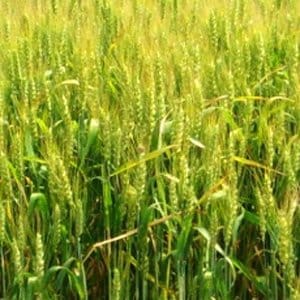
- Vegetation period: 271-319 days, mid-season variety.
- Height: 73-98.
- Anthocyanin coloration of coleoptile: medium-strong.
- Bush: intermediate, semi-erect.
- Wax coating: medium on the ear, medium on the junction of the flag leaf.
- Spike shape: spindle-shaped, club-shaped.
- Ear length and density: average.
- Guard hairs of the ear: medium length.
- The edge of the top of the ear: not pronounced.
- Shoulder: Rounded, narrow and straight.
- Prong: slightly curved.
- Grain: colored.
The specific gravity of 1000 grains ranges from 37 to 48 g. In the region, the yield is about 33.7 c/ha.However, on chernozem the increase according to the standard is 4.1 c/ha, that is, the yield is 40.1 c/ha.
Fact. In 2009, a record harvest was harvested in the Kaluga region, amounting to 66.5 c/ha.
Features of the winter wheat variety Moskovskaya 40
The crop produces a bountiful harvest under the most unfavorable conditions. Many years of work by breeders have created a domestic variety of wheat with low cost and good characteristics of the resulting flour.
Origin story
The winter soft wheat variety Moskovskaya 39 was created by the Research Institute of Agriculture TsRNZ (Research Institute of Agriculture of the Central Regions of the Non-Black Earth Zone). Participating in the selection work: E.T. Varenitsa, B.I. Sandukhadze and G.V. Kochetygov. The selection was carried out from the hybrid offspring of the Obriy and Yantarnaya 50 varieties.
Wheat grew up to 100 cm. She did not suffer from septoria, smut, or snow mold, but she did not have immunity to powdery mildew and leaf rust. The baking qualities are good: the variety was among the best representatives of winter wheat.
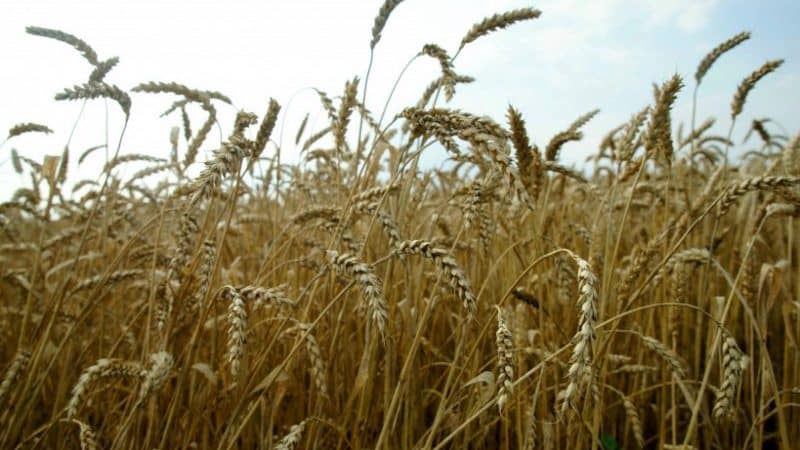 But despite all the positive characteristics, the variety did not fully meet international standards. The filled ears fell under the influence of external negative factors, and a large percentage of the crop was lost. For this reason, breeders from the Nemchinovka Research Institute of Agriculture were forced to do serious work to develop a more advanced variety.
But despite all the positive characteristics, the variety did not fully meet international standards. The filled ears fell under the influence of external negative factors, and a large percentage of the crop was lost. For this reason, breeders from the Nemchinovka Research Institute of Agriculture were forced to do serious work to develop a more advanced variety.
Careful selection lasted for 15 years, ending with the receipt of 200-300 prototypes. After that, in-depth selection work began, which made it possible to form a new variety, Moskovskaya 40. The stems of this wheat are lower and stronger, which makes it possible to preserve almost all the grains.
But work on breeding a shorter plant with a hard and elastic straw did not stop, and soon the Moskovskaya 56 variety appeared. It was bred by crossing the Inna, Mironovskaya semi-intensive and Moskovskaya 39 varieties, and has improved characteristics. Officially, Moskovskaya 56 has been cultivated since 2008.
It shows good results:
- high resistance to lodging;
- more viable stems per square meter;
- disease resistance;
- maximum yield – 8.54 t/ha.
The growth of ears does not exceed 73-75 cm, and this is an important achievement for winter wheat.
Features: taste
From Moskovskaya 40 bakery products are baked on an industrial scale. This is elite flour of the highest grade, with excellent characteristics. It contains 33% raw gluten and water absorption is 60.9%. The dough is formed in 4.5 minutes, and its shape stability received five points.
This is interesting:
Review of winter wheat variety "Yuka".
Description and characteristics of the winter wheat variety “Bagrat”.
What are the advantages over other varieties?
With sufficient moisture provision for winter wheat varieties and the application of mineral fertilizers (N120P90K90), the yield is 56-68 c/ha. But the higher this indicator, the lower the level of protein and gluten became. The Moskovskaya 40 variety is considered an exception to this rule, and is therefore considered elite.
Comparative characteristics of the quality of winter varieties grown in 2009 at the Vygonichsky GSU:
|
Variety |
Protein, % | Weight of 1000 grains, g | Nature, g/l | Productivity, c/ha |
| In memory of Fedin St.
|
11,6 | 48,2 | 759 | 60,2 |
| Moskovskaya 40
|
14,2 | 47,8 | 770 | 58,6 |
| Moskovskaya 56
|
13,2 | 50,4 | 779 | 58,5 |
| Nemchinovskaya 57
|
12,7 | 43,9 | 785 | 59,6 |
| Poem
|
12,6 | 49,3 | 779 | 67,9 |
Moskovskaya 40 is 7-8 cm lower than its predecessor, which gives the straw greater resistance to lodging. The ear became denser and acquired a club-shaped shape.
Characteristics of the variety
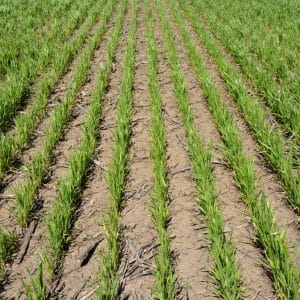
The ripening period of Moskovskaya 40 wheat is slightly later than the recognized standards: In memory of Fedin, Inna and Moskovskaya 39. Wheat has good reviews from agronomist-technologists.
Over a decade of observations, the yield increased by 2.5-3 c/ha more than that of Moskovskaya 39. The quality of grain has noticeably improved.
Drought resistance
Moskovskaya 40 has standard drought resistance. With timely irrigation and harvesting, as well as compliance with care technology, nothing threatens the plants.
Disease resistance
Moskovskaya 40 does not suffer from smut, but is susceptible to septoria and snow mold. There are rare cases of leaf rust infection. In order for strong seedlings to germinate, it is necessary to carry out pre-sowing seed treatment.
This preventive measure will prevent possible diseases of loose smut, root rot, spotting and molding of the seed. Treating is carried out both a couple of days before sowing and earlier.
Main drugs:
| A drug | Quantity,
kg/t, l/t |
Impact on diseases of grain crops |
| "Vincit", KS | 1,5-2,0 | Seed mold, smut, root rot
|
| "Vincite Forte", KS | 0,8-1,25 | Root rot, smut, snow mold,
molding of seeds |
| "Vincite Extra", KS
|
0,6-0,9 | Seed mold, smut,
fusarium and helminthosporium root rot |
| "Premis 200", KS | 0,15-0,25 | Seed mold, dusty and hard smut, septoria, rot |
| "Raksil", KS | 0,4-0,5 | Powdery mildew, smut, seed mold, root rot |
| "Shooting Range", TPS | 1-1,2 | Septoria, seed mold, smut, fusarium and helminthosporium root rots |
| "Maxim", KS | 1,5-2,0 | Fusarium and helminthosporium root rots, smut, snow mold, seed mold |
Winter hardiness
Frost resistance is above average. Winter hardiness is determined by the characteristics of the cultivated variety and the level of concentration of water-soluble sugars collected in the bush nodes of wintering wheat.
Important! It is necessary to timely prepare the soil and seeds for sowing, organize watering and fertilizing. Proper care of seedlings in the autumn and the required temperature during the growing season are mandatory conditions for their viability.
Resistance to lodging
Strong short stems can withstand strong winds and other adverse weather conditions. Moskovskaya 40 is more resistant to lodging compared to its predecessors.
Resistant to shedding
Long and strong awns cover the grains, tightly adjacent to each other. This protects the wheat from shedding. The higher the bushiness, the more yield the plant will produce. The maximum density is 500-700 straws per square meter. m.
Features of growing the Moskovskaya 40 variety
Winter wheat varieties Moskovskaya 39, Moskovskaya 56 and Moskovskaya 40, subject to the developed cultivation technologies, produce a harvest of industrial scale. The figure ranges from 5.8 to 8.0 t/ha.
Predecessors
In central Russia, the composition of the soil for a long time did not allow the cultivation of grain with high baking characteristics. And only Moskovskaya 39 began to be used for these purposes, and not for feeding livestock. The stems of this variety are 15 cm shorter, which determines the strength of the straw. They are not affected by wind and precipitation, and the yield has become higher.
Moskovskaya 39 was bred to obtain food grain volumes in the Central region of Russia. It has excellent technological cultivation qualities, responds well to fertilizing, and has high productivity. Up to 35-50 centners of high quality grain are harvested from one hectare.
Landing dates
For the full development of winter wheat varieties, sowing is carried out in early autumn. On average, 50-60 days before the onset of stable frosts. The sowing density should be low, because winter varieties produce abundant seedlings due to their increased ear growth. Plants should develop freely and not interfere with each other.
Choose a narrow-row sowing method, thereby providing protection against the growth of weeds. Wheat sowing is carried out strictly from north to south so that the sun has time to evenly warm all the seeds.
Soil requirements
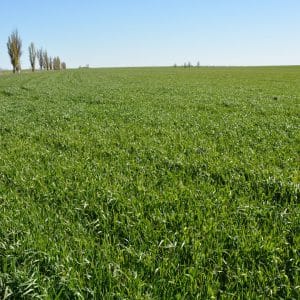
Scientists in the Moscow region carefully monitor the variety and select high-quality seed stock.
There is no need to treat Moscow 40 with expensive chemicals - the plant has innate resistance to dangerous diseases. This determines the low cost of grain.
It is important to comply with the following conditions:
- Moisture. The soil should contain about 10 mm of water during the sowing period. Lack or excess of moisture can destroy crops.
- Optimal temperature. Violation of this condition will lead to loss of harvest. When the temperature drops to +4...+5°C, shoot growth stops and a dormant stage begins.
- Loosening. Necessary for oxygen access to the roots.
Successful cultivation of winter varieties requires leaving fields free of weeds. To prevent them from germinating on a field left fallow, the sowing and sowing dates should not be violated.
It is necessary to rationally use herbicides from groups 2M-4X, 2M-4HP, 2.4 D. Their effectiveness drops when the temperature during the spraying period drops to +12˚C, and at +8...+10˚C the drugs become useless.
Other
To increase the yield and quality of grain, agronomists use a mineral fertilizer feeding system:
- Nitrogen. Agrotechnical analysis of its content is carried out in the spring. Two methods of replenishment are practiced: gas and solid mineral fertilizers. In the first case, the stage of fertilizing (magnesium sulfate must be added to one) is divided into three times according to the phases of tillering, internode and flag leaf. In the second case, feeding with fertilizers is divided into two stages: first, two-thirds of the fertilizer is given, and then what is left of the total volume. It is better to use ammonium nitrate, which will give a quick start to growth and development.
- Sulfur. It is important for increasing the baking qualities of winter wheat and the abundance of the harvest. It is added to the soil during the period of vegetative mass accumulation. In the early stages of development, wheat has enough sulfur found in the natural content of the soil. Some agronomists use ammonium sulfate and slak it with lime. If there is not enough potassium in the soil, it is necessary to include it in the fertilizing. In this case, they focus on the region and climatic features.
- Phosphorus. They are added either to the bulk of fertilizers or during sowing. The element increases winter hardiness and helps the plant absorb essential nutrients. Phosphorus is useful for the development of the root system and is important for the successful passage of the growing season. Agrotechnical analysis of its content is required in the fall.
The nutritional pattern of winter wheat must be balanced in order to satisfy all its needs for macro- and microelements.
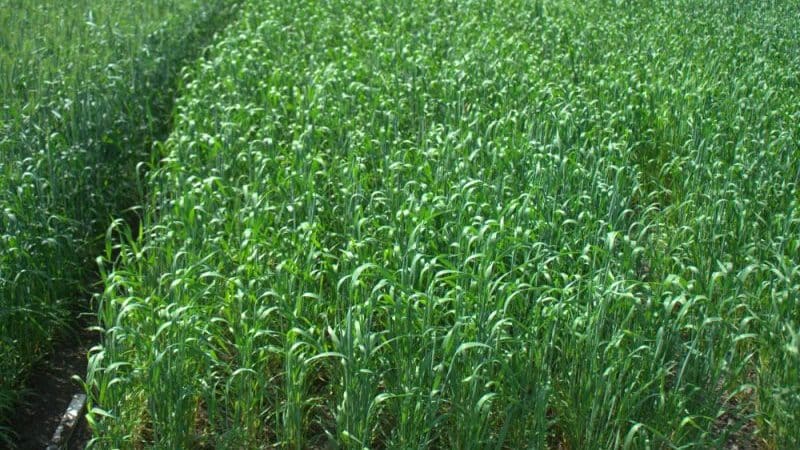
Yield characteristics
In the harsh conditions of the Russian winter, it is important to create conditions for the full development of the wheat root system. In spring, the plant is filled with moisture reserves and grows at an accelerated rate. For this reason, the yield of winter crops is several times higher than that of spring varieties. Nemchinovtsy plan to increase the area's crop area to 200 hectares by sowing predominantly winter varieties.
On the experimental fields of Nemchinovka, the initial maximum yield of Moskovskaya 40 wheat was up to 15 t/ha, which is twice the norm for the best indicators in the world. The variety is resistant to adverse weather conditions and dangerous diseases.
Read also:
The benefits and harms of sprouted oats.
What cereals are made from barley and the beneficial properties of the cereal.
Conclusion
Moscow 40 wheat is receiving more and more positive reviews from practicing agronomists in the central region. It is in demand on the market due to its excellent natural properties (weight of grain volume), flour strength and high protein content. But despite all the positive characteristics of Moskovskaya 40, Nemchinovka scientists continue to crossbreed varieties to make the stems even shorter and the ears more abundant.